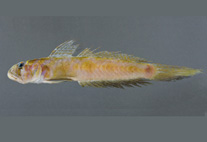Abstract
The widespread tropical gobionelline fish genus Oxyurichthys is monophyletic due to its species sharing two characters considered derived within the Stenogobius Group of the Gobionellinae (Gobioidei: Gobiidae), a transversely broadened (spatulate) third neural spine that is usually bifid, and no preopercular cephalic lateralis canal. It is most closely related to Oligolepis, also of the Indo-west Pacific, and Ctenogobius, an Atlantic-eastern Pacific genus. Sixteen valid species of Oxyurichthys are redescribed and illustrated and four new species are described, O. limophilus from the western Indian Ocean, O. rapa from French Polynesia, and O. chinensis and O. zeta from the western Pacific. Nineteen species share two additional synapomorphies, a rounded fleshy tongue and a palatine lacking an elongate posterior strut, and form the sister group to the plesiomorphous Oxyurichthys keiensis, known from South Africa and Madagascar. One species, O. stigmalophius, occurs in the western Atlantic. There are no records of this genus from the continental eastern Pacific or the eastern Atlantic. Previous accounts from the Gulf of Guinea region of West Africa are references to Gobionellus occidentalis. Many Oxyurichthys species are limited to shallow estuarine and coastal waters with bottom substrates of silt or other fine sediments, but several are known from depths exceeding 10 m and are often collected by trawling.

